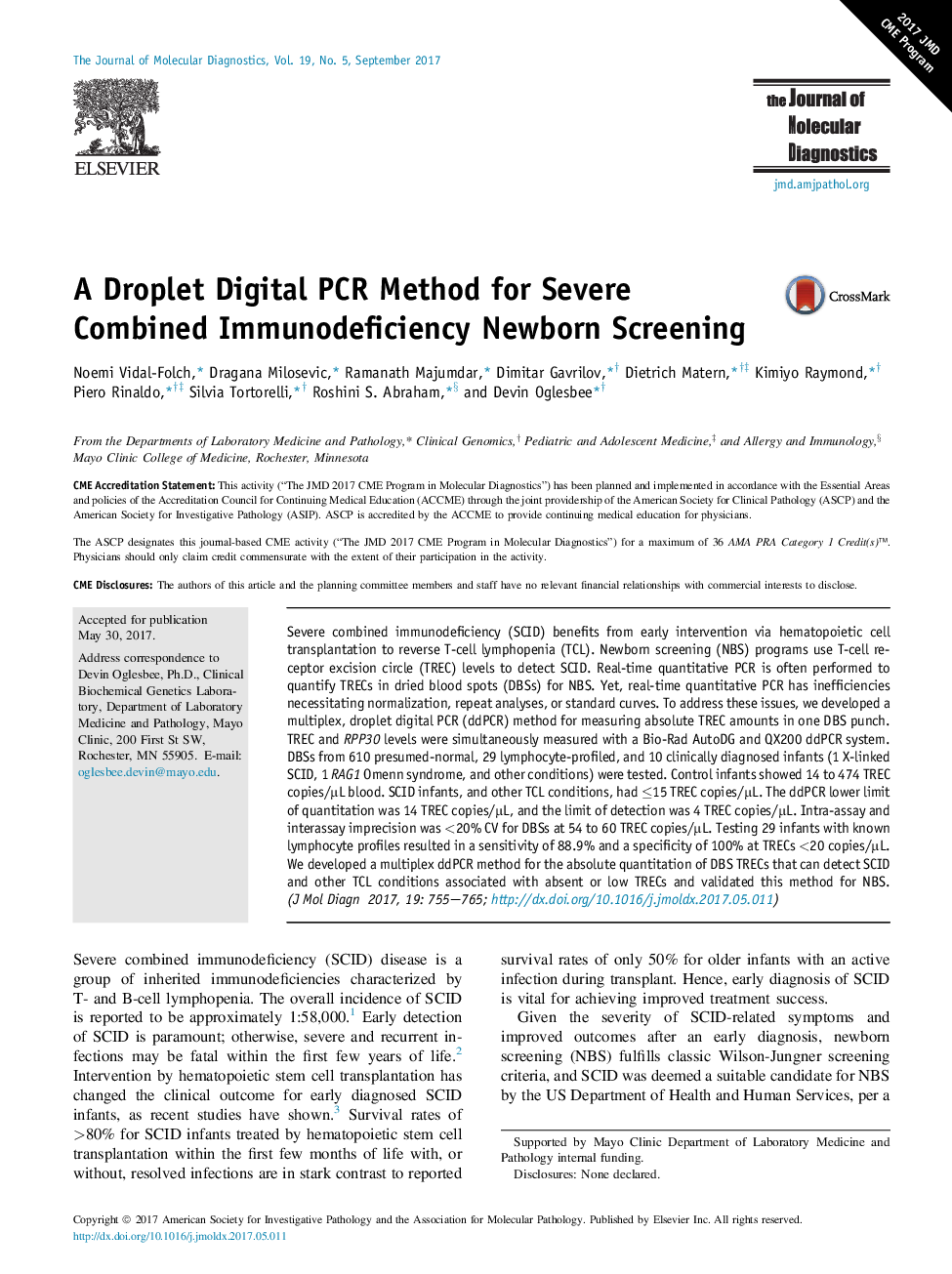| Article ID | Journal | Published Year | Pages | File Type |
|---|---|---|---|---|
| 5662981 | The Journal of Molecular Diagnostics | 2017 | 11 Pages |
Abstract
Severe combined immunodeficiency (SCID) benefits from early intervention via hematopoietic cell transplantation to reverse T-cell lymphopenia (TCL). Newborn screening (NBS) programs use T-cell receptor excision circle (TREC) levels to detect SCID. Real-time quantitative PCR is often performed to quantify TRECs in dried blood spots (DBSs) for NBS. Yet, real-time quantitative PCR has inefficiencies necessitating normalization, repeat analyses, or standard curves. To address these issues, we developed a multiplex, droplet digital PCR (ddPCR) method for measuring absolute TREC amounts in one DBS punch. TREC and RPP30 levels were simultaneously measured with a Bio-Rad AutoDG and QX200 ddPCR system. DBSs from 610 presumed-normal, 29 lymphocyte-profiled, and 10 clinically diagnosed infants (1 X-linked SCID, 1 RAG1 Omenn syndrome, and other conditions) were tested. Control infants showed 14 to 474 TREC copies/μL blood. SCID infants, and other TCL conditions, had â¤15 TREC copies/μL. The ddPCR lower limit of quantitation was 14 TREC copies/μL, and the limit of detection was 4 TREC copies/μL. Intra-assay and interassay imprecision was <20% CV for DBSs at 54 to 60 TREC copies/μL. Testing 29 infants with known lymphocyte profiles resulted in a sensitivity of 88.9% and a specificity of 100% at TRECs <20 copies/μL. We developed a multiplex ddPCR method for the absolute quantitation of DBS TRECs that can detect SCID and other TCL conditions associated with absent or low TRECs and validated this method for NBS.
Related Topics
Health Sciences
Medicine and Dentistry
Health Informatics
Authors
Noemi Vidal-Folch, Dragana Milosevic, Ramanath Majumdar, Dimitar Gavrilov, Dietrich Matern, Kimiyo Raymond, Piero Rinaldo, Silvia Tortorelli, Roshini S. Abraham, Devin Oglesbee,
